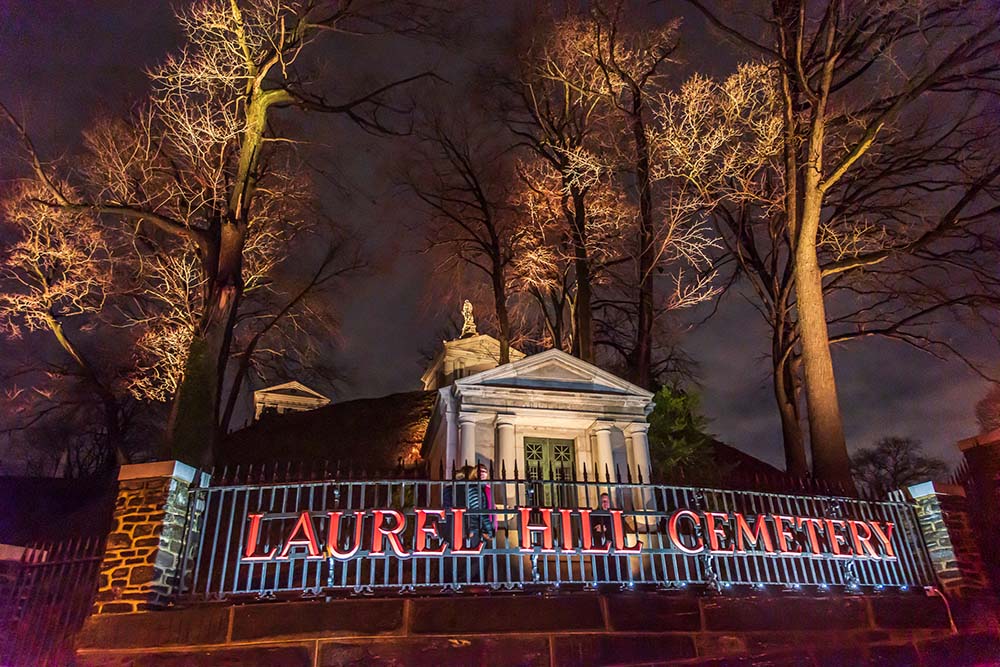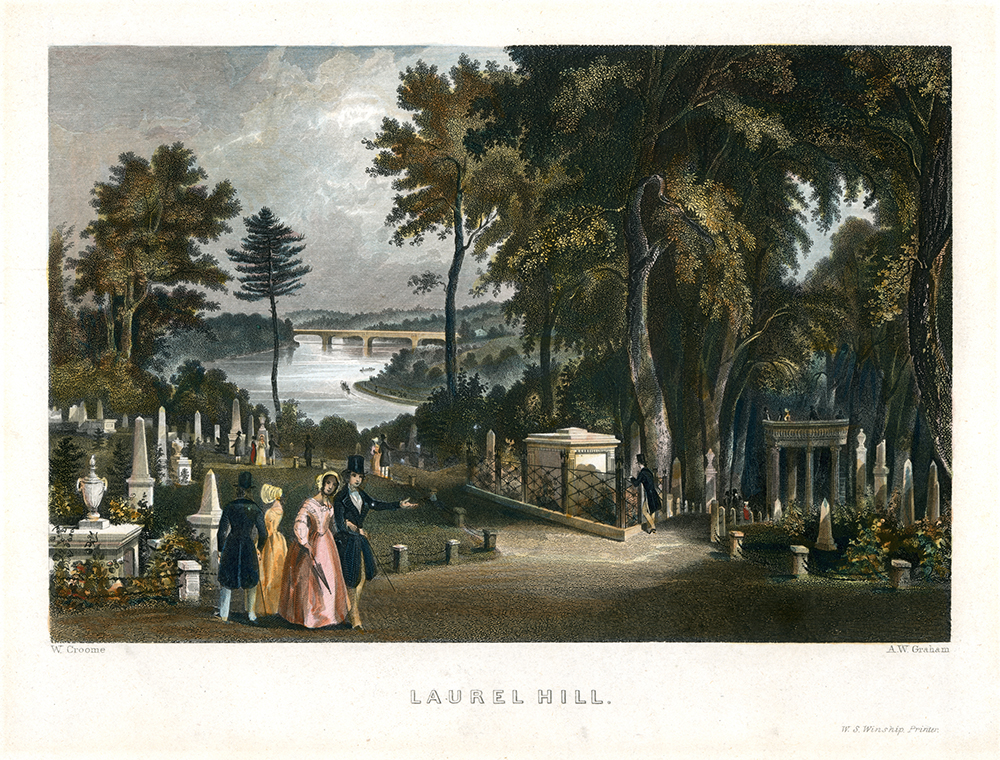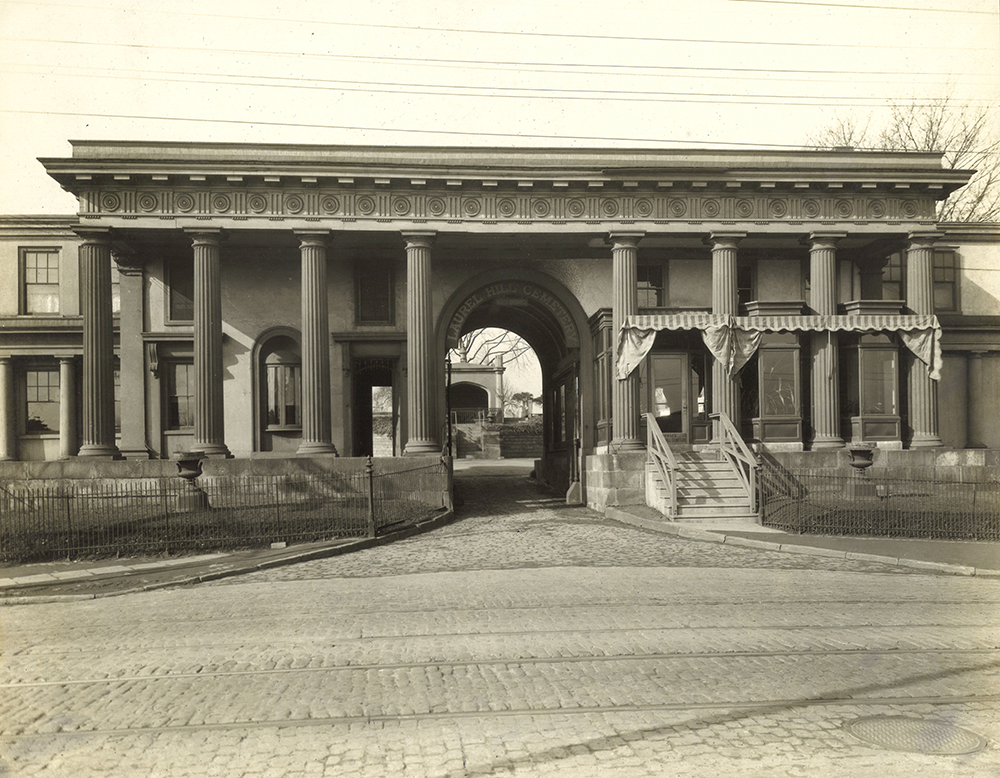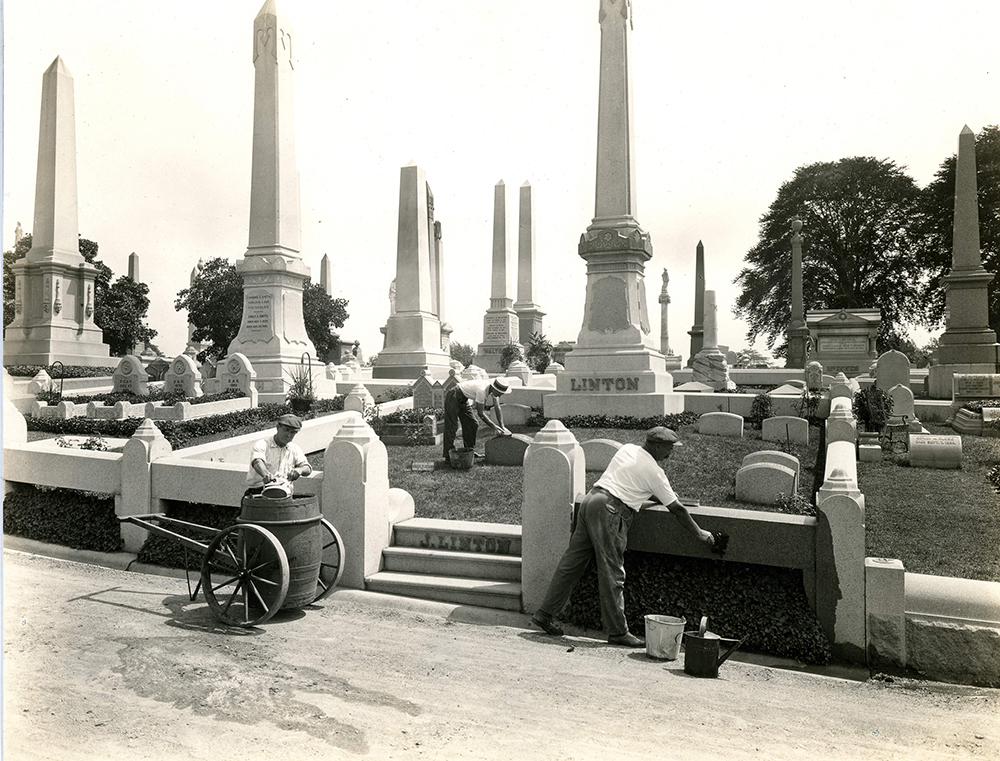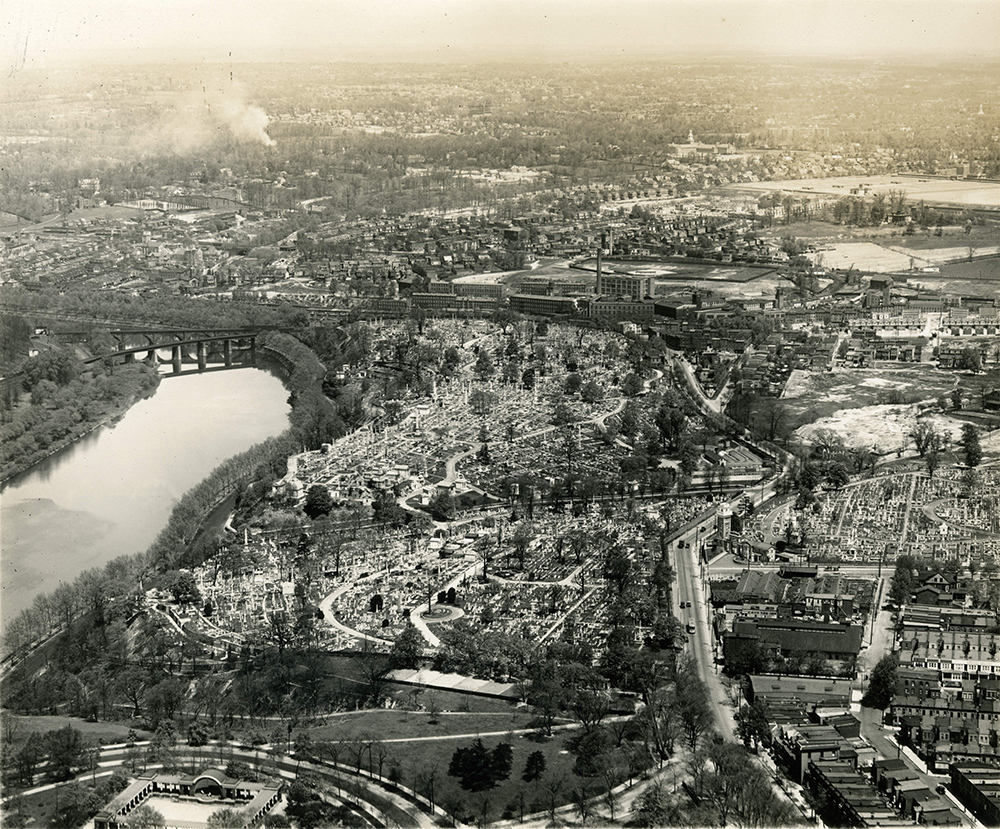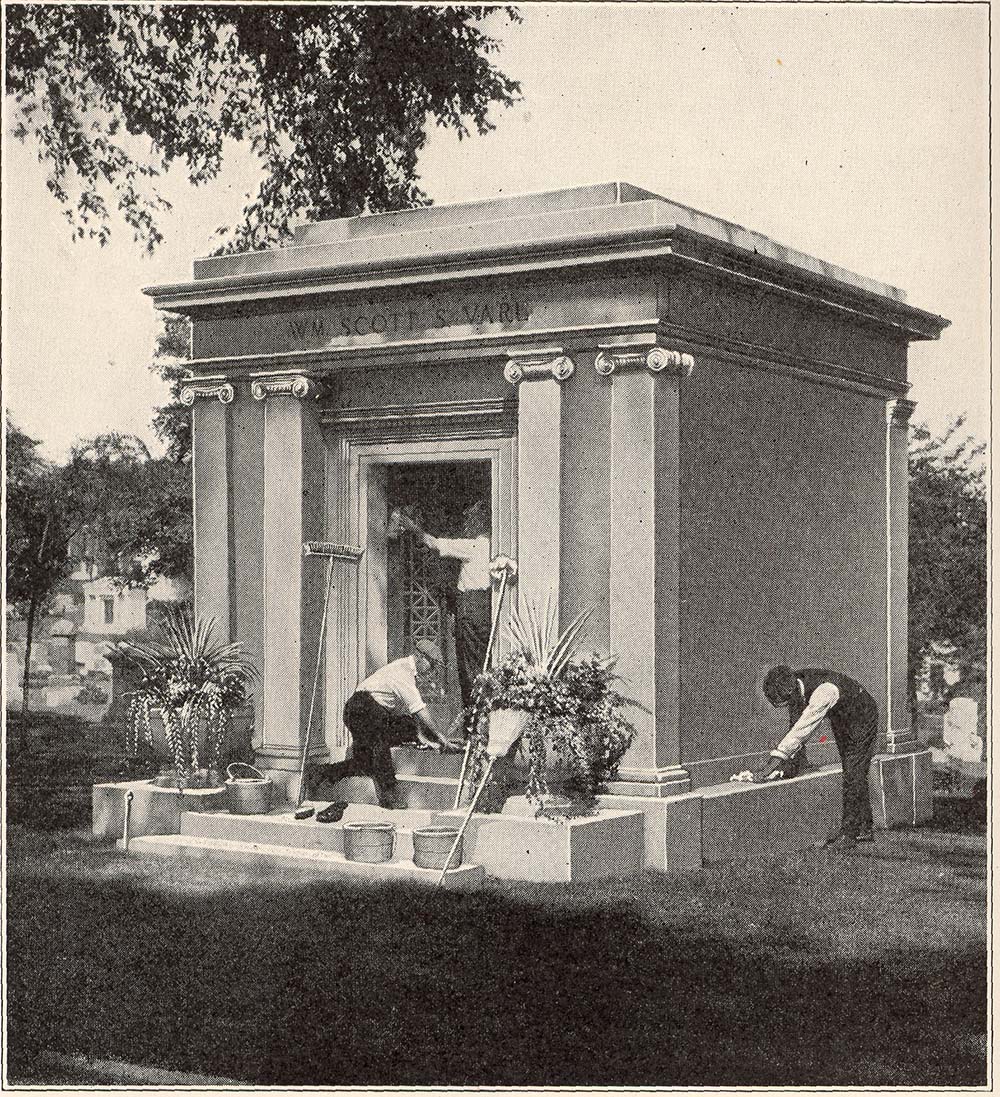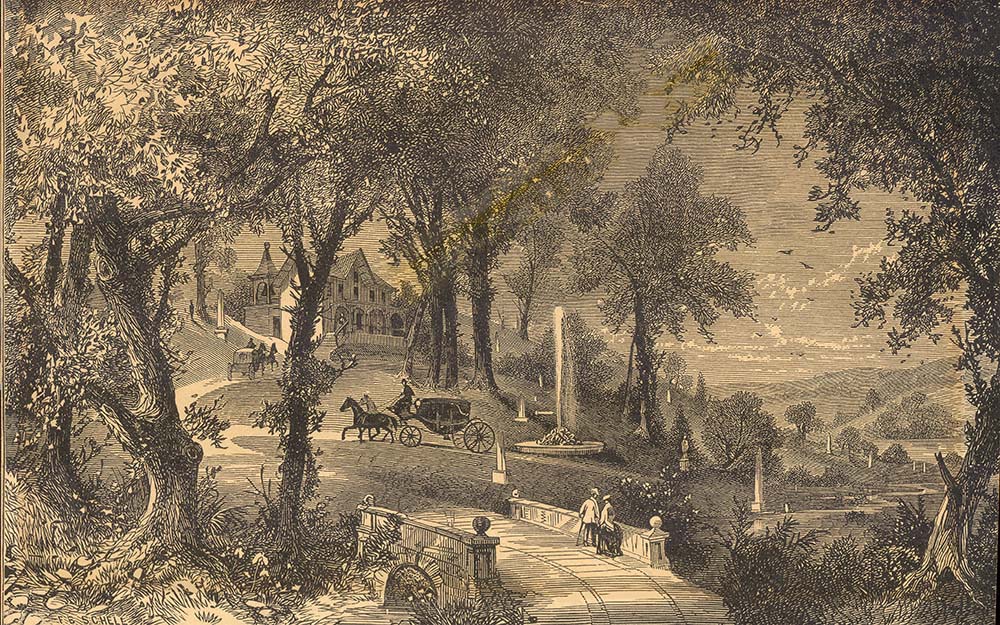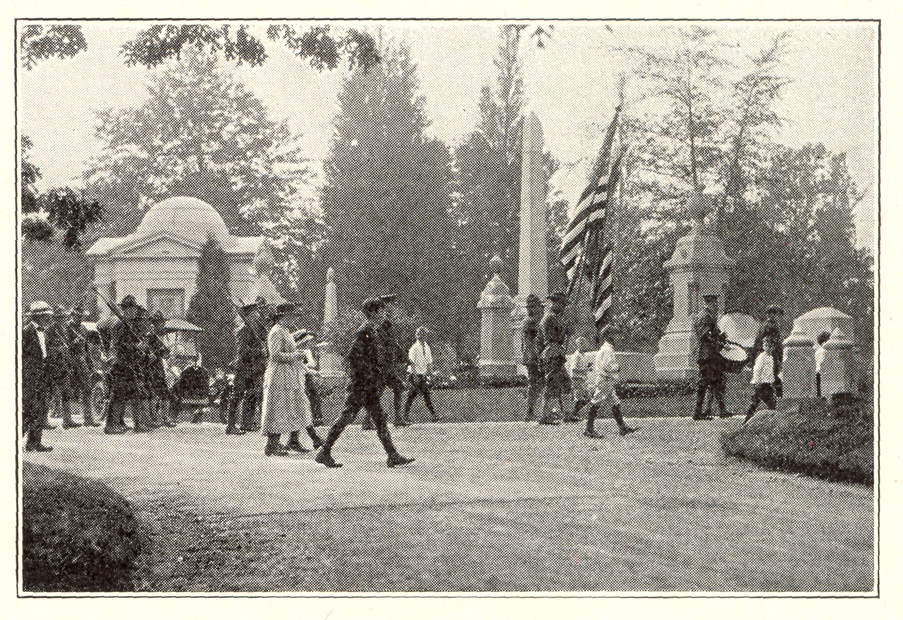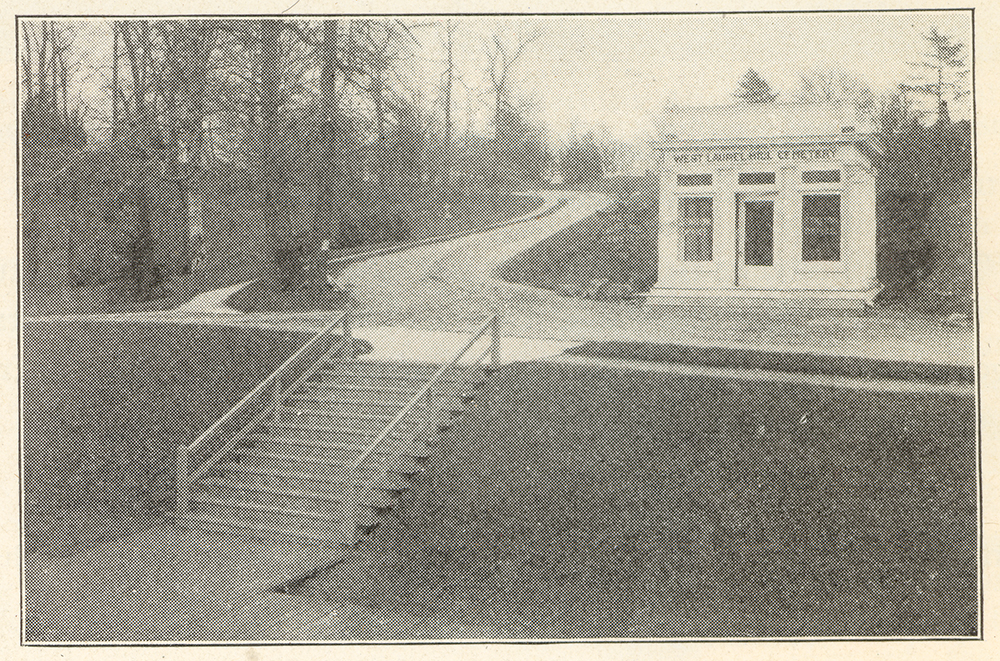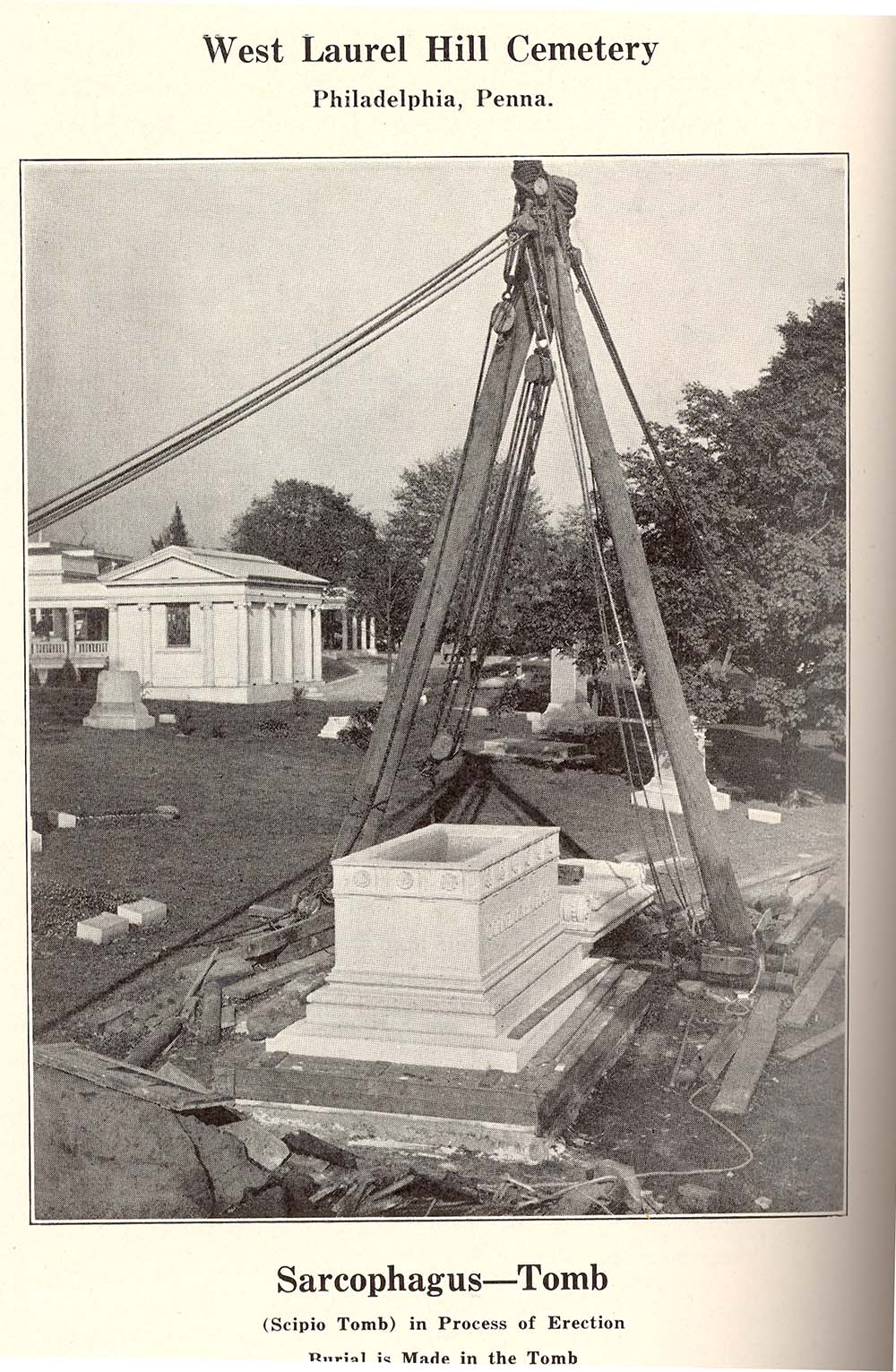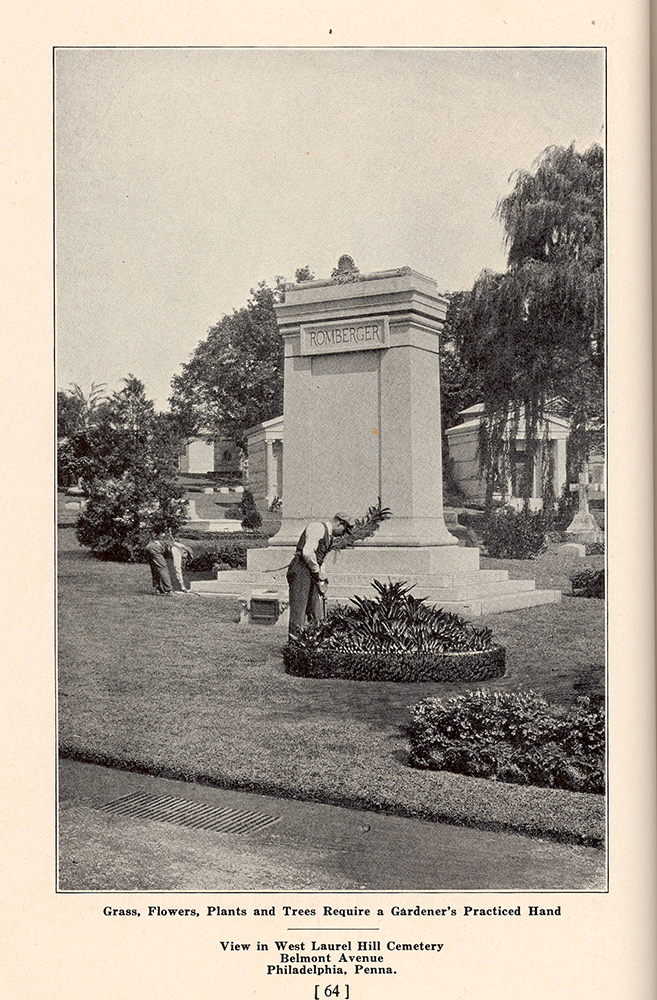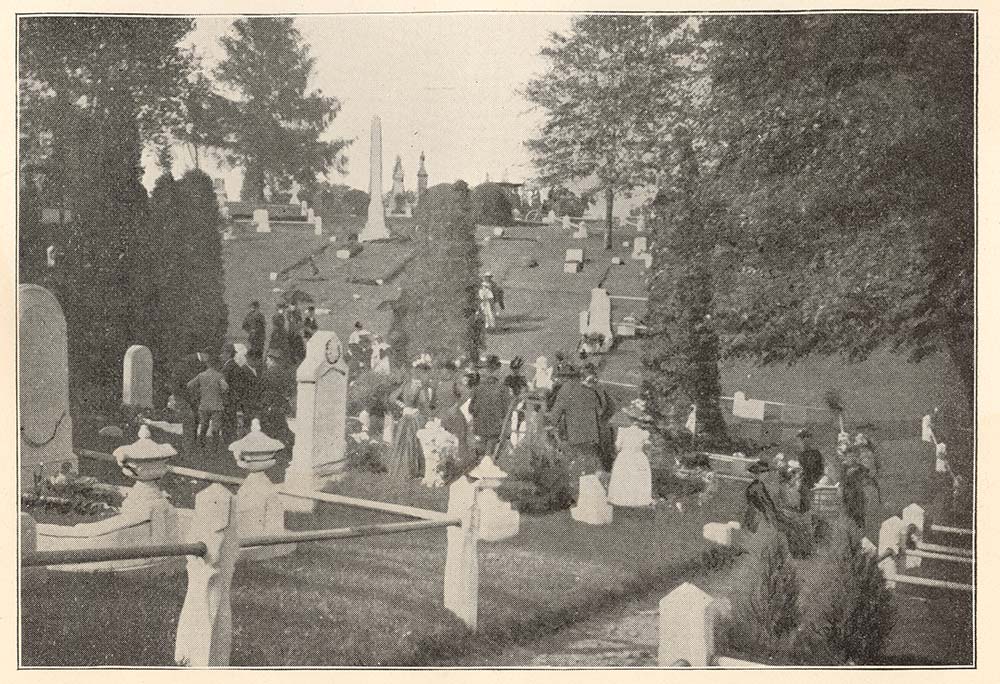History
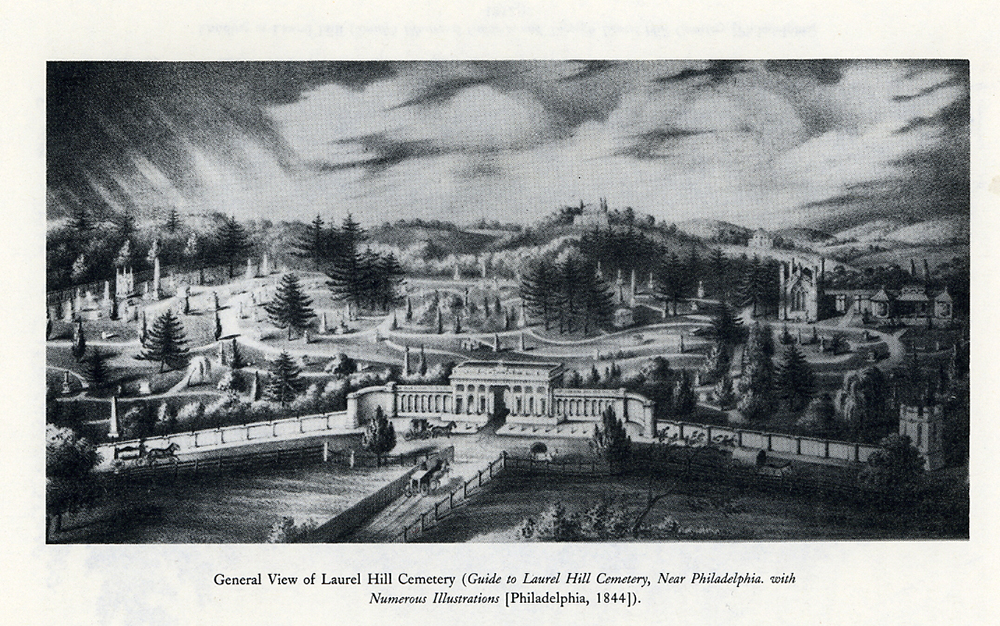
By 1836, cities along the eastern seaboard were expanding rapidly. As the nation’s living populace grew, so too did its dead. Burial grounds were often paved over or removed to clear land for roads and buildings. Laurel Hill East Cemetery, founded in 1836, offered families an alternative for burial, reflecting changing attitudes towards death. America’s rural cemetery movement was born, with Laurel Hill at its forefront.
The Evolution of
Public Space
Laurel Hill also represented an important phase in the evolution of public space. Scottish born architect John Notman, Laurel Hill East’s chief designer, carved out the cemetery’s landscape to take advantage of its riverside location. Early managers promoted personal expression in monument design; families responded with gravestones both grand and elaborate. The wealthy even employed renowned sculptors to adorn their sites.
Founder and proprietor, John Jay Smith, further cultivated the site into a landscaped arboretum, guiding the planting of botanical species from around the world. All of these unique features led Laurel Hill to rapidly become a popular tourist destination for people across the country. Although Laurel Hill predated the public park system, in many ways it served the same purpose before such a concept even existed.
Expanding West
The expansion of Fairmount Park in the 1860’s prevented further growth at Laurel Hill East Cemetery and in 1869, founder John Jay Smith established Laurel Hill West Cemetery across the Schuylkill River in neighboring Lower Merion Township, Montgomery County. Both cemeteries are home to generations of Philadelphians from all stations of life including well-known names representing nearly every discipline — artists, architects, authors, doctors, musicians, politicians, scientists, war veterans, civic leaders, innovators in industry, and more. Names such as Rittenhouse, Strawbridge and Widener are certainly of local interest, but Breyer, Luden, Stetson, and Whitman are brands known across the country.
Establishing the
Funeral Home
In 1994, Laurel Hill West purchased Bringhurst Funeral Home and in 1997, the present funeral home was erected on the grounds of the cemetery. In 2016, the funeral home rebranded to be recognized as West Laurel Hill Funeral Home and in an effort to unify both cemeteries and the funeral home, rebranded once more in 2022 to Laurel Hill Funeral Home.
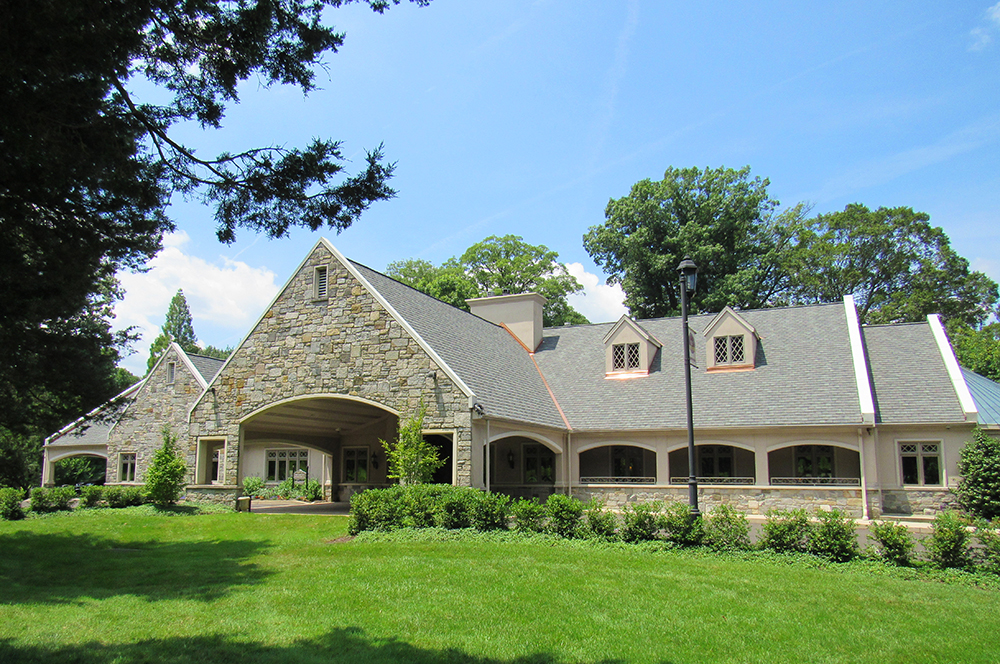
Supporting Preservation
To support the continued preservation and interpretation of the sites, the Friends of Laurel Hill was founded as a 501(c)(3) nonprofit corporation. Since that time, the Friends has worked to reposition Laurel Hill as a cultural and educational attraction. The importance of Laurel Hill’s history, coupled with the work of the Friends, has garnered designations on the National Register of Historic Places, the National Recreation Trails System, and as the first cemetery to be honored as a National Historic Landmark.
In recent years, Laurel Hill’s visibility has increased substantially. Opening the Kelly Drive Pedestrian Access greatly improved entry to both the cemetery and the adjoining Ridge-Allegheny-Hunting Park neighborhood for cyclists, walkers, and runners from the Schuylkill River Trail. An ambitious lighting initiative launched in 2020 highlights significant mausoleums and monuments to travelers along Kelly Drive at night, and a natural landscape restoration project along Kelly Drive is in the works to significantly improve the environmental and ecological character of the area.
